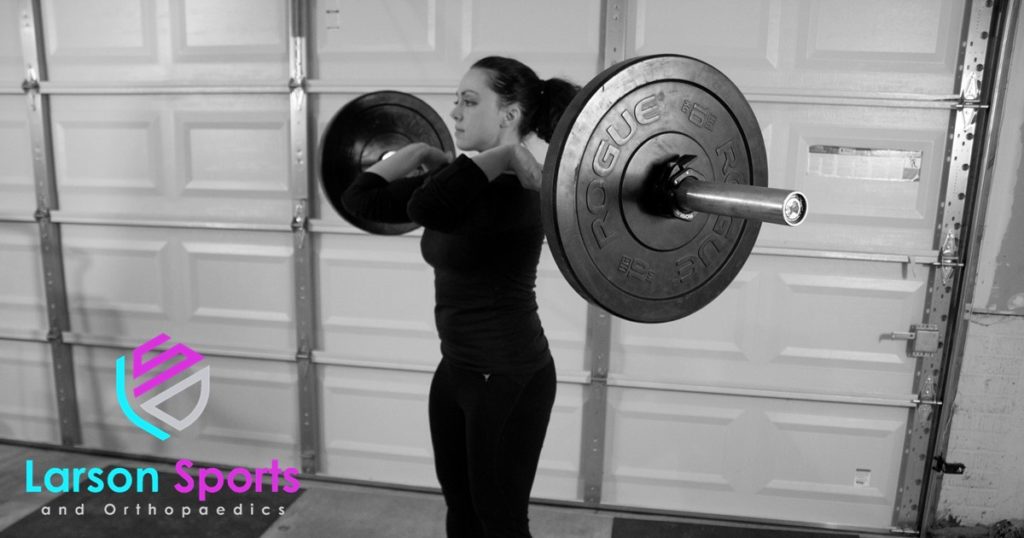How many of you have had a bad day and thought “I suck, I’m never going to get this” or maybe “I should just give up, I’m getting any better. In fact, I might be getting worse!”
I’m sure you have. Most of us do! But would you ever say something like that to one of your clients or friends? Would you let someone else speak to you like that? Of course not! So, why do we think it is ok to speak to ourselves that way?
Well, it’s isn’t. And we all need to work on getting rid of that negativity and replacing it with positive self-talk! As a coach, I’ve seen negative self-talk lose games. And, I’ve seen positive self-talk win them. The same is true for personal fitness.

Read More:
3 Techniques to Stop Negative Self-Talk
What Is Self-Talk?
Self-talk is our dialogue to ourselves, whether it is in our head or out loud. It can include such negative thoughts as “This is stupid” or “I can’t do it, I should just stop trying.”
It can also be positive and constructive. “I am a machine! I can’t be stopped!” gives us encouragement to keep going. “Yes! I finally figured out this technique!” helps to both reinforce skills and help motivation. Ideally, we all would have positive self-talk all of the time.
But it’s hard to be positive when we are stressed, injured, or tired. That’s when those negative thoughts start to creep into our minds. That negative attitude can have real effects on our performance, dedication, and personal achievement.
Talk Nicely To Yourself, Your Body Is Listening
Research has shown that positive self-talk can increase productivity and improve performance on both mental and physical tasks. Positive self-talk can prevent injuries and it’s also been shown to improve recovery when dealing with an injury.
The mind-body connection is real. And a lot of new research in sports medicine and exercise science revolves around how the mental aspects of fitness enhance the physical ones. Studies have even shown that chances of reinjury after ACL surgery depend as much on mental factors as physical ones.
The same applies to personal fitness. Positive self-talk can help push you beyond your normal performance. The right self-talk can help you hit lifts you’ve been struggling with. It can help keep you growing, improving, and reaching your goals even when you are tired, frustrated, or upset.
How To Talk To Yourself To Improve Results
The major uses of self-talk include instruction, motivation, relaxation, and focus. Some of them overlap with each other and could help you in more than just one way. I’ve seen these techniques work time and again to help improve the teens I coach and they can see real improvements!
The various types of self-talk should be recognized and used to help us all improve our confidence and performance.
1) Focus Self-Talk
This type of self-talk reminds you to concentrate on what you are doing and eliminate distractions, “It is just me and the bar. Ignore the class, ignore the clock, and DO THE WORK.”
It could also be used to look for a strategy to improve your times or performance. Putting a plan in place will help you focus on the task at hand and not divert your attention. “If I pace my pull-ups better, I won’t have to take a break before starting the cleans.”

2) Instructional Self-Talk
Instructional self-talk is concerned with technical skills and strategy and is used to “fix” errors. This kind of self-talk can also remind us how to do something correctly.
In the gym it would be something like, “I’m going to push with my entire body during this bench press.” Or maybe repeating the steps you want to focus on during a lift “Get under the bar!”
It can also be used when you do something right, as reinforcement for a positive outcome. “Yes! I could really feel full triple extension on that clean!”
3) Motivational Self-Talk
Motivational self-talk increases confidence, effort, energy expenditure.
It helps to create a positive outlook and mood and is effective for strength and endurance tasks. “I can keep going! I only have to do this exercise for 1 more minute!”
It can also be used as a reminder of past successes during difficult training sessions, practices, or competitions. Thinking about the end result – being able to jump higher, run faster, lift heavier – during a strenuous workout can help to motivate you to do one more box jump, one more sprint, or one more rep.
There is a lot of evidence that fatigue during exercise is mediated by signals between your muscles and your brain. And you can help your brain ignore that fatigue with the right self-talk!
4) Relaxation Self-Talk
This can be used in high-pressure situations to ease the tension, such as during competition: “Just run your race, don’t worry about them! You can take it at the end.” Relaxation Self-Talk can also be used when striving for new personal records: “Don’t worry you’ll get it. If not today, then soon.”
Using a physical cue such as snapping your fingers or clapping your hands is also helpful. Reminding yourself of why you are doing that specific cue with a verbal cue is extra beneficial, “I’m going to squeeze my fists and take a breath. When I release them, my tension will be gone.” I have some players that snap their fingers so they can remember to “break” their tension.
Treat Yourself Well
Remember, be kind to yourself. As an athlete, you will make mistakes. You will have times where your performance is not optimal. Your weight will fluctuate. You’ll miss lifts. And you’ll have a hard time mastering things that come easily to others. You’ll have to deal with outside stressors such as relationships, work, or school.
Learning to manage these emotions and behaviors will help you become a better athlete, spouse, student, and person. And positive self-talk can be a powerful way to do so. And remember…talk to yourself like you would talk to a friend!

Kristen is a lifelong competitive athlete. She holds a Masters in Sports Psychology from Lockhaven University, which she applies to great success as a volleyball coach for numerous teams.


